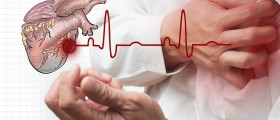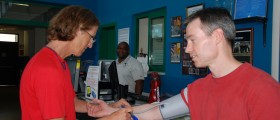
An acute myocardial infarction is triggered by the necrosis of the myocardial tissue. The reason behind this is ischaemia, which takes place due to the coronary artery being blocked by a thrombus. In the majority of cases, this condition, also known as heart attack, is inferior or anterior, even though there are cases where the infarction may get through the posterior wall of the left ventricle, leading to a posterior myocardial infarction.Signs of Ischaemia
Myocardial infarction can most easily be predicted through an electrocardiogram, which can show blockages in the coronary artery. Also, the appearance of pathological Q wave changes in the ECG can bear witness of this condition. Finally, the imaging may provide the doctors with proof that the myocardium is not working correctly and show abnormal regional wall motions.
Facts about Myocardial Infarction
Coronary heart disease is considered to be one of the most frequent causes of death in the UK. In fact, every fifth death in males and sixth in females is due to this condition. Among people who are between 30 and 69 years old, 600 in 100,000 die from this illness when it comes to men and 200 from the same quantity lose their lives to coronary heart disease when it comes to women.
While people who are of South Asian origin, people from North England, Northern Ireland and Scotland are most prone to coronary heart disease, women in their pre-menopausal periods seem to be protected from it.
Some of the common risk factors include age, male sex, family history of coronary heart disease and premature menopause. Also, people who smoke or suffer from diabetes or hypertension, metabolic syndrome, obesity and some other conditions and unhealthy lifestyles, are prone to coronary heart disease too.Manifestations of Coronary Heart Disease
Usually, chest pain is the most prominent signs of this condition taking place. However, some people have complained about pain in the arms, shoulders, neck and even jaw. The pain felt is best described as a mixture of squeezing, aching, burning and pressure, even though some people experienced sharp pain as well.
Additionally, vomiting, nausea, tiredness, palpitations and dysponea, may all take place hand-in-hand with the coronary heart disease.
Upon experiencing any of these symptoms you are advised to seek medical assistance. Your doctor will perform the necessary checkups, diagnosing your condition properly and recommending the best possible treatment.
You should pay your doctor a visit as soon as possible since time is of the essence when it comes to conditions which affect the health of your heart.

















Your thoughts on this
Loading...